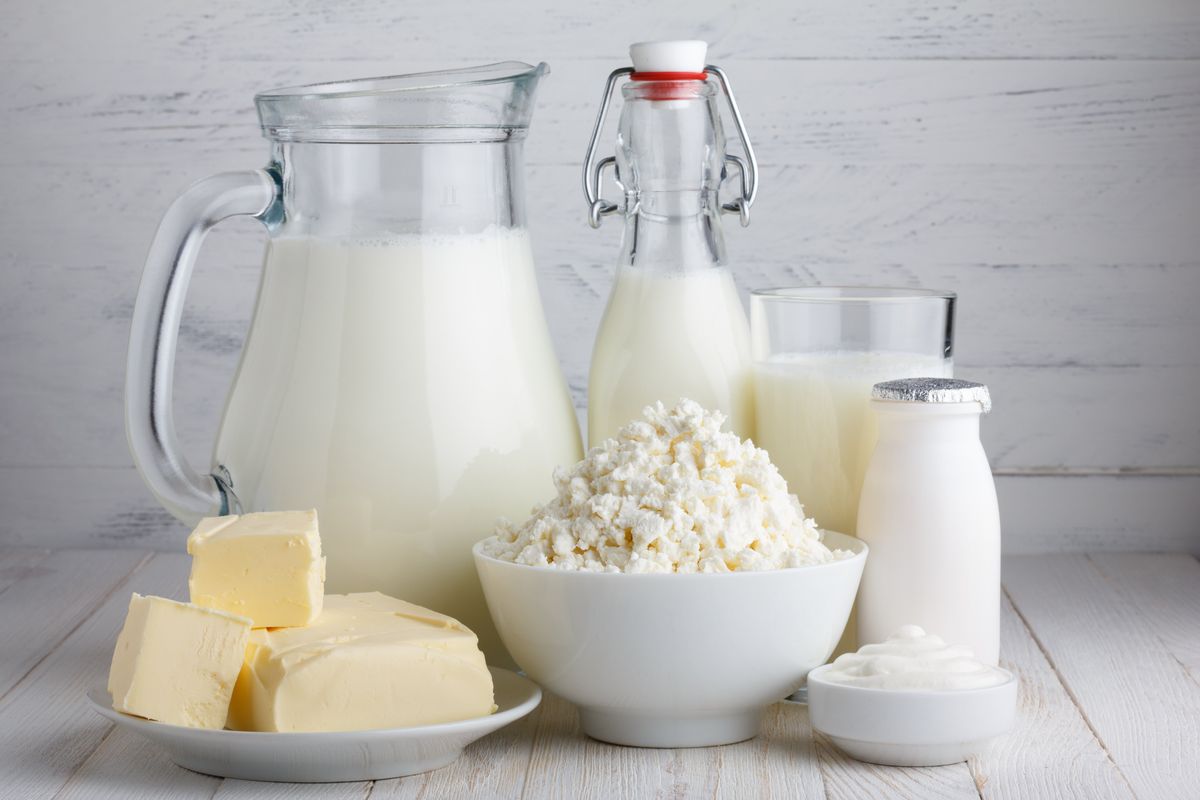
Lactose intolerance affects millions globally, but what exactly is it? Lactose intolerance means your body struggles to digest lactose, a sugar found in milk and dairy products. This happens because of a deficiency in lactase, the enzyme responsible for breaking down lactose. Symptoms can include bloating, gas, and diarrhea after consuming dairy. It's not the same as a milk allergy, which involves the immune system. Many people manage lactose intolerance by reducing or avoiding dairy, using lactase supplements, or choosing lactose-free products. Curious about more? Here are 50 facts to help you understand lactose intolerance better.
Key Takeaways:
- Lactose is a sugar found in milk and dairy products, and it's also used in many processed foods. Understanding lactose can help you make better dietary choices and avoid tummy troubles.
- Lactose intolerance happens when the body can't digest lactose properly. But don't worry, there are plenty of lactose-free alternatives available, like plant-based milks and cheeses, to keep your tummy happy!
What is Lactose?
Lactose is a sugar found in milk and dairy products. It’s a disaccharide composed of glucose and galactose. Understanding lactose can help you make informed dietary choices.
- Lactose is a carbohydrate.
- It’s naturally present in milk from mammals.
- Human breast milk contains about 7% lactose.
- Lactose is less sweet than sucrose (table sugar).
- It’s used in the food industry as a stabilizer and filler.
Lactose Intolerance
Lactose intolerance occurs when the body can’t digest lactose properly. This happens due to a deficiency in lactase, the enzyme needed to break down lactose.
- Lactase production decreases with age.
- Symptoms include bloating, diarrhea, and gas.
- It’s more common in adults than children.
- Around 65% of the global population has some degree of lactose intolerance.
- It’s more prevalent in East Asian, West African, Arab, Jewish, Greek, and Italian populations.
Lactose in Foods
Lactose isn’t just in milk. It’s found in various dairy products and even some non-dairy foods.
- Cheese contains varying amounts of lactose.
- Hard cheeses like cheddar have less lactose.
- Yogurt can be easier to digest due to probiotics.
- Lactose is present in baked goods.
- Some medications contain lactose as a filler.
Lactose-Free Alternatives
For those who are lactose intolerant, there are plenty of alternatives available.
- Lactose-free milk is treated with lactase.
- Plant-based milks like almond, soy, and oat are lactose-free.
- Lactose-free cheese is available.
- Lactose-free yogurt is an option.
- Lactase supplements can help digest lactose.
Health Benefits of Lactose
Despite the issues some people have with lactose, it does offer health benefits.
- Lactose aids in calcium absorption.
- It provides a quick source of energy.
- Lactose can promote the growth of beneficial gut bacteria.
- It helps in the absorption of minerals like magnesium and zinc.
- Lactose is less likely to cause tooth decay compared to other sugars.
Lactose in Different Cultures
Different cultures have varying levels of lactose tolerance and consumption.
- Northern Europeans have higher lactose tolerance.
- East Asians have the highest rates of lactose intolerance.
- Traditional African diets are often low in dairy.
- Mediterranean diets include moderate dairy consumption.
- Indigenous populations in the Americas have high lactose intolerance rates.
Lactose and Infants
Infants have a unique relationship with lactose, especially since it’s a major component of breast milk.
- Babies produce high levels of lactase.
- Lactose is crucial for infant growth.
- Formula milk often contains lactose.
- Some infants can be lactose intolerant.
- Lactose-free formulas are available for sensitive infants.
Lactose in Processed Foods
Lactose can be hidden in many processed foods, making it tricky for those with intolerance.
- Processed meats like sausages may contain lactose.
- Instant soups and sauces often have lactose.
- Some snack foods include lactose.
- Lactose can be found in margarine.
- It’s used in some salad dressings.
Lactose and Pets
Lactose affects pets differently than humans. Knowing how it impacts them can help in pet care.
- Most adult cats are lactose intolerant.
- Dogs can also be lactose intolerant.
- Lactose-free pet milk is available.
- Feeding pets regular milk can cause digestive issues.
- Some pet treats contain lactose.
Fun Facts about Lactose
Here are some interesting tidbits about lactose that you might not know.
- Lactose was first identified in milk in 1619.
- The word “lactose” comes from the Latin word for milk, “lac.”
- Lactose is used in the pharmaceutical industry.
- It’s a key ingredient in some sports nutrition products.
- Lactose can be used in fermentation processes to produce alcohol.
Final Thoughts on Lactose
Lactose, a sugar found in milk, plays a significant role in our diet. Some folks digest it easily, while others struggle due to lactose intolerance. This condition, caused by a deficiency of lactase, affects millions worldwide. Symptoms include bloating, gas, and diarrhea. However, many lactose-free alternatives exist, like almond milk and lactose-free dairy products, allowing everyone to enjoy their favorite foods.
Understanding lactose's impact on health is crucial. It provides energy and aids calcium absorption, essential for bone health. Yet, excessive consumption can lead to digestive issues, especially for those with lactose intolerance. Moderation and awareness of one's tolerance levels are key.
Incorporating lactose-free options and monitoring intake can help maintain a balanced diet. Whether you love dairy or prefer alternatives, knowing these facts ensures you make informed choices for your health.
Frequently Asked Questions
Was this page helpful?
Our commitment to delivering trustworthy and engaging content is at the heart of what we do. Each fact on our site is contributed by real users like you, bringing a wealth of diverse insights and information. To ensure the highest standards of accuracy and reliability, our dedicated editors meticulously review each submission. This process guarantees that the facts we share are not only fascinating but also credible. Trust in our commitment to quality and authenticity as you explore and learn with us.
